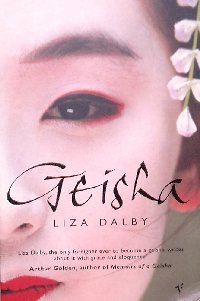Publication Date: 01/09/2005 • 329 pages •
ISBN: 0553816780
... Did you know that the well-known hero, Sinbad the Sailor, was actually a Eunuch employed inthe Chinese court of a 15th century Ming Emperor? His real name was Zheng He, nicknamed 'San Bao' and retired Royal Navy commander, Gavin Menzies, in his book "1421", credits San Bao with arriving in the 'New World', seventy-one years before Christopher Columbus did. Listen to this HERE
...and did you know that Chinese legend has it that one life was claimed for every stone laid along the Great Wall? When you consider that the Great Wall runs for thousands of kilometers, we're contemplating a staggering figure of lost lives!
...also, were you aware, that the world-famous Shaolin Temple, the originator of Kung-Fu and other martial arts that we enjoy so much was acutally the home of warrior monks?
...finally, did you know that foot binding was started during the Tang Dynasty? The court of the Tang Dynasty was so impressed with how the foreign dancers piroutted on their toes, that the Chinese court dancers also bound their feet to imitate the dancers' moves. Centuries later bound feet would become the norm for all upper-class Chinese women and prostitutes. And while we're on the subject of the Tang Dynasty, did you know that they have the distinction of having had the only female empress? Empress Wu started her court life as a concubine of Emperor Taizong. After the Emperor died she began a liaison with his son and successor, Gaoszong and after he died she successfully wrested control for herself overthrowing all Chinese precepts of male lineage.
No? Well, I didn't either until I delved into Polly Evans' new travel book book 'Fried Eggs with Chopsticks" (to be known as FEWC henceforth in this review). "FEWC" seems like a lightweight travel book to begin with, the kind of book you want to take with you to read at long waits at airports or on an airplane, but don't let its frothy title fool you. Embedded in it's paperback pages are weighty nuggets of information on China---its people, culture and best of all, history.
In an interview with the Transworld Publishing House, the author gave these reasons for wanting to write this book:
"...China has one of the fastest-growing economies on the planet, and the Chinese are pouring enormous resources into their infrastructure - apparently they've built enough roads in recent years to circle the equator sixteen times. Also, at the moment, China is home to the fastest train in the world, Shanghai's Maglev - it travels at 430 kilometres per hour. So I thought I'd go and see for myself how this vast nation was hurtling into the technological age. Of course, when I got there, I found the building work wasn't quite finished yet, and I spent an awful lot of time on rattling country buses, clattering down pot-holed tracks pressed up against Buddhist monks and sacks of squawking chickens. The tale of that trip, "FEWC", will be published by Bantam in September 2005..."
Ms. Evans has a great sense of humor and an astute sense of observation that she blends with some wonderful historical research making this an absolutely pleasant and yet very informative read.
My favorite parts, apart from the historical data, are when she describes her train rides across China orthe hotel rooms she stays in. Here's a bit of what she wrote, describing her hotel room in Datong, China:
"...The hotel was a reasonable one. The Powers-that-be had allocated it four stars. It had a decent restaurant, the room was clean and the bathroom facilities worked. But I was surprised in such a seemingly salubrius place to find a collection of lotions on offer in thte bathroom that suggested some kinds of business conducted here did not require a suit and tie. Next to tiny bottles of shampoo, lay four sachets, two marked 'Man' and two marked 'Woman.'
'Eliminates pathogenic bacteria which can cause the disease of colpitis, pruritis, peculiar smell, ringworm at the thigh area and beriberi. Our product is 99.9% effective in eliminating gonorrhoea coccus', declared the packet marked 'woman'.
It went on. 'Using guide: Please scrub away repeatedly at the position with the product for about two to three minutes, and then wash with clean water'.
It went on. 'Using guide: Please scrub away repeatedly at the position with the product for about two to three minutes, and then wash with clean water'.
The brand name of the lotion was 'Know You Bird'. Across the front of the packet was stamped in big black letters: ' UNCOMPLIMENTARY'.
It seemed strange, really. The crime of organizing prostitution carries the death penalty in China, yet there semed little doubt what was doing on quite openly in this hotel. I eyed my bed with a new level of mistrust and hope the she sheets had been well boiled!..." pg.50
It seemed strange, really. The crime of organizing prostitution carries the death penalty in China, yet there semed little doubt what was doing on quite openly in this hotel. I eyed my bed with a new level of mistrust and hope the she sheets had been well boiled!..." pg.50
Pick up this book for a train ride through China without ever having to get on a train!

